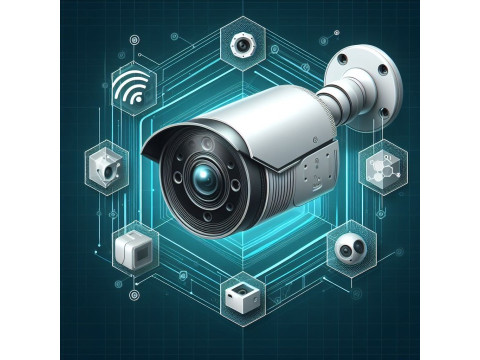Internet Video Surveillance: How to Stay in Control Anytime, Anywhere
Gone are the days of clunky analog cameras. Modern internet-based video surveillance lets you monitor your property from anywhere using just your smartphone or computer. With advancements in IP cameras, cloud storage, and mobile apps, securing your home or business has never been easier.
What Camera Do You Need?
Indoor Cameras
For indoor spaces, compact IP cameras with 2–4 MP resolution are ideal. Look for features like:
- IR night vision for clear footage after dark.
- Built-in microphones for audio monitoring.
- Wide viewing angles (90°+ recommended).
- Motion detection sensors.
Outdoor Cameras
For external use, opt for weatherproof cameras with IP66+ ratings, designed to handle tough environments. Choose models with:
- IR night vision that covers up to 65 feet.
- High resolution (4 MP or more) for detailed long-range monitoring.
- Varifocal lenses for adjustable viewing angles.
Specialty Cameras
For areas with heavy foot traffic or potential vandalism, dome cameras with anti-vandal features are a solid choice. Advanced features like Wide Dynamic Range (WDR) ensure great image quality in tricky lighting conditions.
Internet Requirements
Smooth video streaming depends on your internet speed:
- Full HD (1080p) cameras need 2–4 Mbps upload speed each.
- Using H.265 encoding? You’ll save 30–50% on bandwidth.
For a system with four Full HD cameras, aim for at least 20 Mbps upload speed. Keep in mind that upload speed is more critical than download speed for video surveillance systems.
Storage Options
Local Storage
Network Video Recorders (NVRs) or Digital Video Recorders (DVRs) are classic options for storing footage.
- NVRs handle IP cameras and support up to 18 TB drives for months of footage.
- DVRs work well with analog setups.
Advanced models even offer video analytics and automated alerts.
Cloud Storage
Cloud storage eliminates the hassle of managing hardware. Many manufacturers offer tiered plans with features like:
- Automatic backups.
- Remote access to archived footage.
- Protection from equipment damage or theft.
Setting Up Your System
Camera Configuration
- Adjust resolution and frame rates.
- Optimize brightness and contrast.
- Enable motion detection and night mode.
Optimize Data Transmission
- Use H.265 for better compression.
- Set appropriate bitrate levels for each camera.
- Test buffer settings to prevent lag.
Boost Security
- Use strong, unique passwords.
- Regularly update firmware.
- Enable two-factor authentication (2FA).
Mobile Access and Control
Most systems come with dedicated apps for smartphones and tablets, letting you:
- Watch live feeds on the go.
- Control pan-tilt-zoom (PTZ) cameras remotely.
- Get instant notifications for motion detection or other events.
- Manage storage, export videos, and tweak settings on the fly.
Why Choose Internet Video Surveillance?
With the right setup, internet-based surveillance offers:
- Reliable, real-time monitoring.
- Hassle-free access from anywhere.
- Scalable solutions for homes, businesses, or larger properties.
Take control of your security with systems that fit your needs and keep you connected 24/7!

